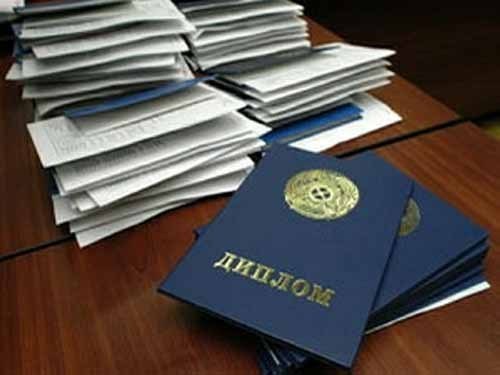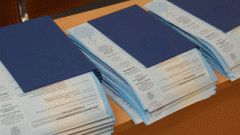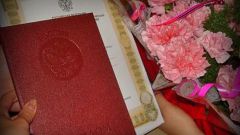You will need
- - magnifier
- - infrared detector
- - Xerox
- - care
Instruction
1
Look closely at the coat of arms of Russia is depicted in the upper part of the right side of the spread degree. It runs Orlovsky printing method. Image taken with Orel machine can not be repeated not only by the offset method used in printing, but even most of this machine without having the original forms. Moreover, machines for Orlov's printing has only GOZNAK.So, on the original of the diploma with a magnifying glass you can see items such as: crosses for the power, and crowns; beads on the power (13 pieces); the eyes of a horse on the shield and other small parts. On the forgery these elements are simply blurred due to lack of image clarity. Keep in mind: the coat of arms of the Russian Federation can not be faked!
2
The second highest degree of protection - regional labeling. Every diploma issued shall be entered in the Unified State Register (accordingly, it is possible to check), and on the form of the diploma shall be marked with the proper knowledge, you can decipher that issued the diploma, what type of document it is, and other information. The markings are located right under the signature "Diploma" on the right of the reversal of the diploma.
3
Direct link with regional labeling has the registration number and date of issue of the document. They are located at the bottom left side of the spread degree. Falsifying numbers in the field for the registration number I put random, but to find out what is coincidence and what is not, can only be addressed to the University specified in the diploma.
4
In the presence of UV lamps can be checked for authenticity watermarks. Depending on the year, the signs can look like the inscription "Russia diploma", "RF" or "RF" enclosed in a rectangle with a stylized corners. The sign of authenticity is the lack of image water mark in the light of the ultraviolet rays. Why? - because the original water-marks applied by stamping, i.e. are a consequence of the deformation of the paper. While fake watermarks covered with transparent paint, which, of course, begins to glow in the UV rays.
5
Continuous line - gillery protection element is a background pattern of continuous lines intersecting at different angles and change color randomly. A continuous line is also Orlovsky printing method and cannot be faked. When considering the counterfeit document through a magnifying glass you can see that the lines are continuous, but monochrome (i.e. one color), or change color, but are interrupted (they will appear as bitmap - individual points).
6
You can also try to make a copy of the reversal of the diploma. The sign of authenticity is the presence of out Xerox copies of the relevant inscription: "copy". When fake low quality this element of protection is missing. A method of manufacturing the protection element is simple - the inscription on the document to apply the invisible paint, which manifests itself under the influence of high temperature - so it is easy to forge.
7
Another low-level security feature - silk threads embedded in the document. Strands impregnated with a special solution, which is in the ultraviolet radiation begins to Shine brightly. As in the previous case, this method of protection is not technologically complex, so only the fakes are low quality. There are elements of protection as the microlettering and colour transition - currently, they are also quite easy to fake, so you can't rely on their presence as a sign of true authenticity.











